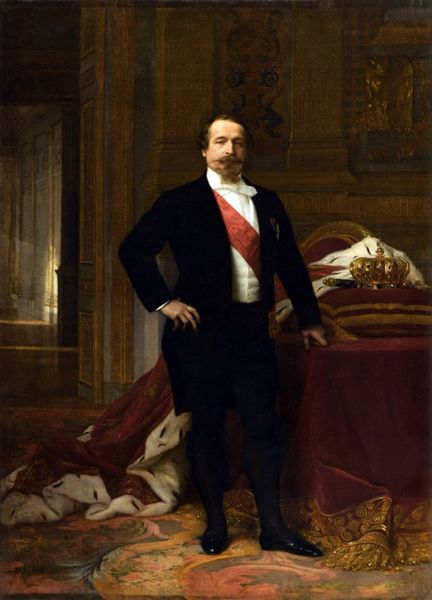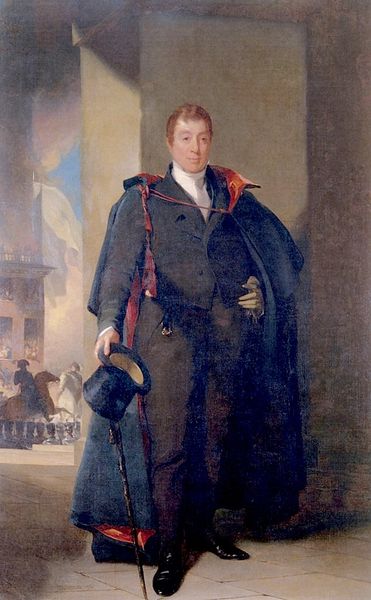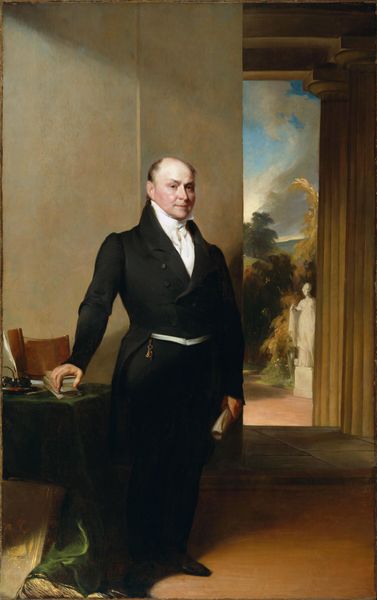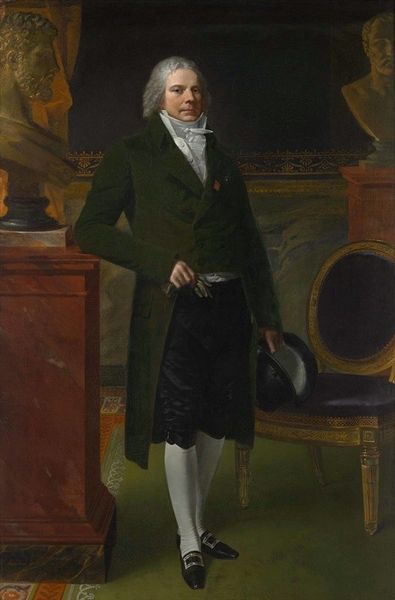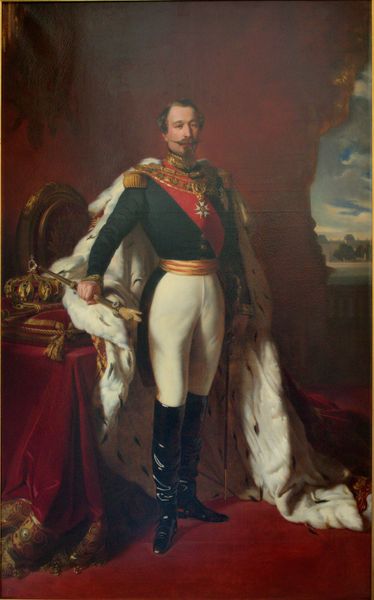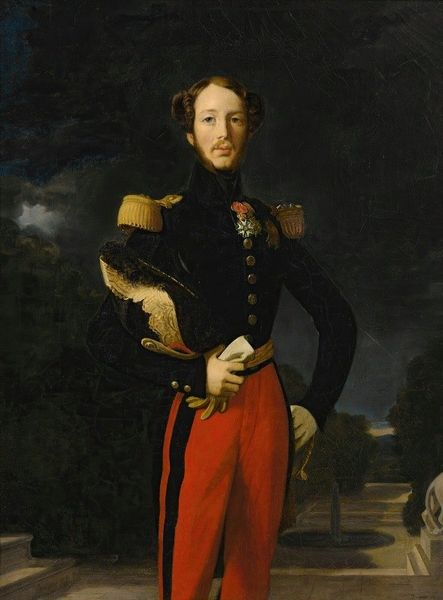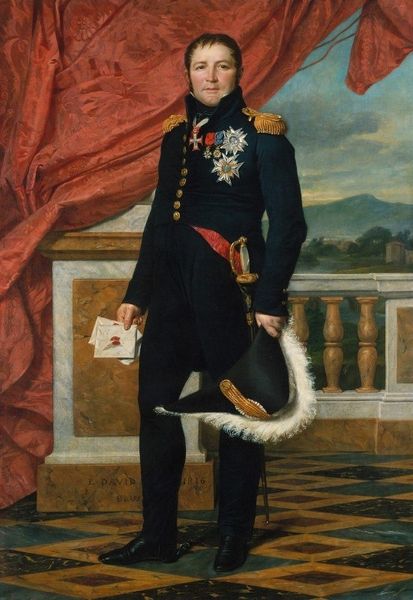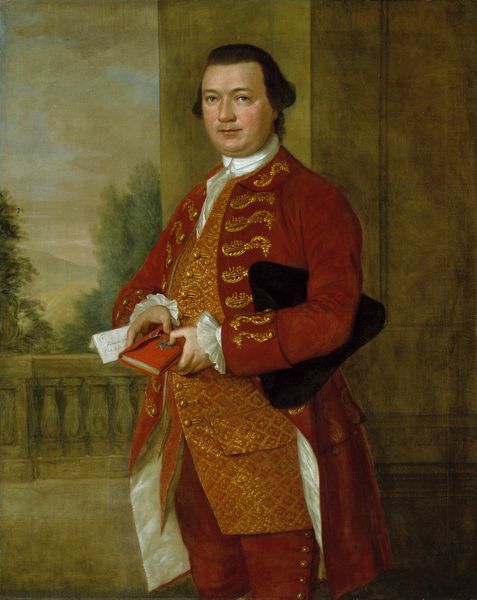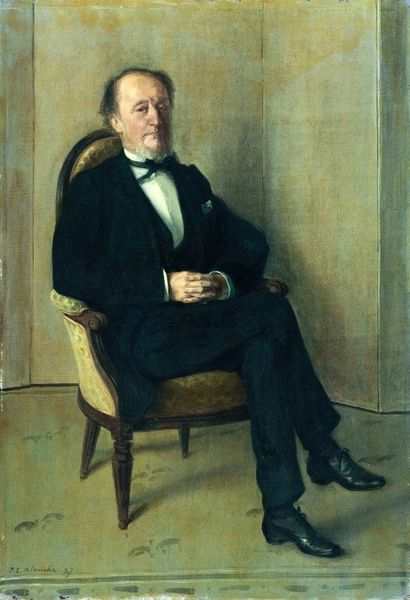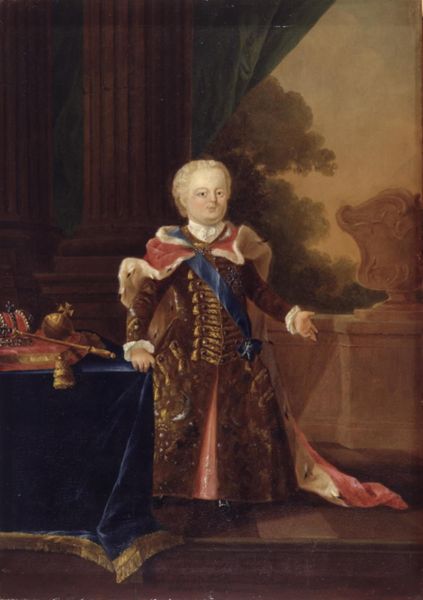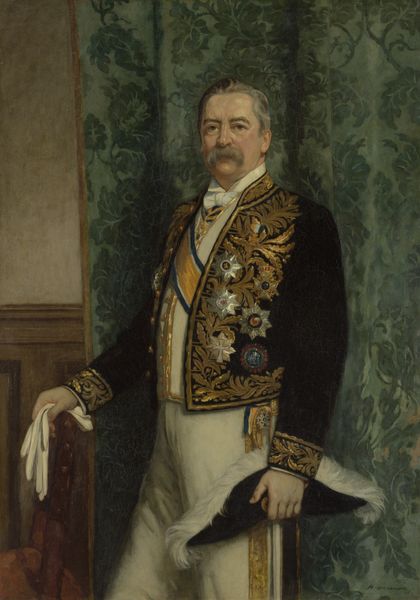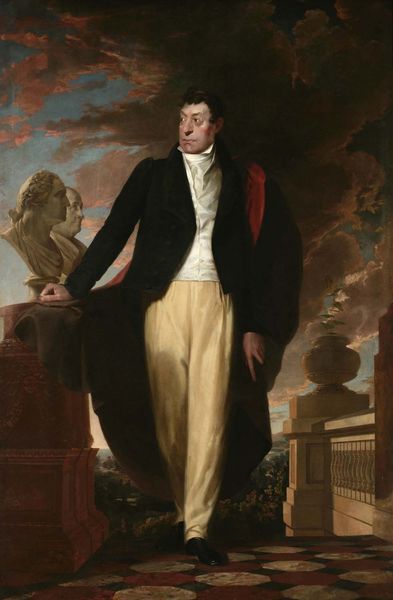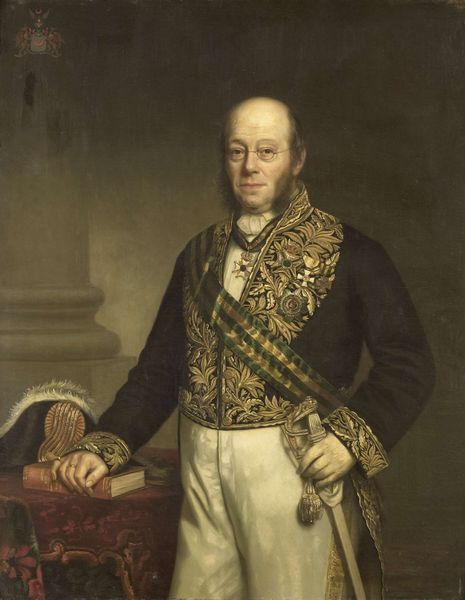
Copyright: Public Domain: Artvee
Curator: Standing before us is Alexandre Cabanel's 1865 portrait of Napoleon III. It's a compelling depiction, especially when considering the political landscape of the Second Empire at that time. Editor: It strikes me as carefully posed, almost staged, and there is an element of loneliness conveyed in the portrait—a powerful ruler caught in a moment of reflection, maybe? Curator: Absolutely. Cabanel, a favorite of Napoleon III, understood how to craft an image. Consider the setting. The regalia on the table to Napoleon’s right and the formal attire establish the Emperor’s authority. But the averted gaze, the hand placed almost casually on his hip, introduces a human element, perhaps softening the imperial image for the public. This type of portrait played a vital role in shaping the public's perception and acceptance of his regime. Editor: The weight of power clearly rests heavy, symbolized perhaps by that rather imposing crown resting on a velvet cushion behind him. But what about the symbols he's wearing? The red sash especially seems significant. Curator: Indeed. The sash is the Grand Cordon of the Légion d'Honneur, France’s highest order of merit. These visual cues reinforce his legitimacy, connecting him to a legacy of French leadership. It is not merely decoration but also a symbolic affirmation of his place in the narrative of French power. His attire speaks to legitimization and to the Empire's efforts to cast itself within French history. Editor: Do you think it humanizes Napoleon III to place his regalia behind him? The staging is masterful in its balance. There's an almost weary vulnerability implied. Despite the obvious indicators of wealth, and luxury—of ultimate power—there's also an understated melancholy. Curator: I agree. By presenting a composed, yet somewhat detached Emperor, Cabanel avoids bombast, attempting a relatable representation of leadership in the era. This portrait offered a vision of Napoleon III as a figure grounded in French traditions while simultaneously projecting an image of modern, yet stable, governance. This work contributed to the evolving nature of both portraiture and the propaganda machine. Editor: The symbols seem so powerful; but yet his humanness perseveres—fascinating! Curator: Yes, and through an understanding of art like this, we find avenues through which to investigate social attitudes toward authority and French identity in the 19th Century.
Comments
No comments
Be the first to comment and join the conversation on the ultimate creative platform.
